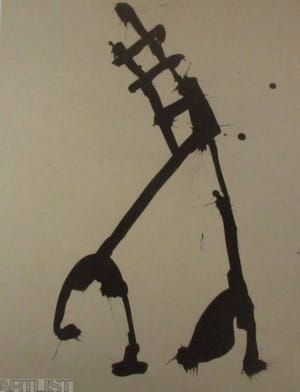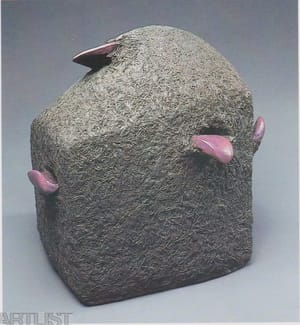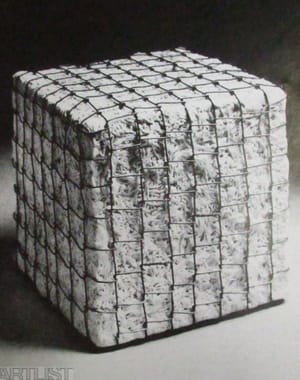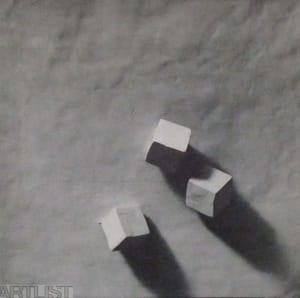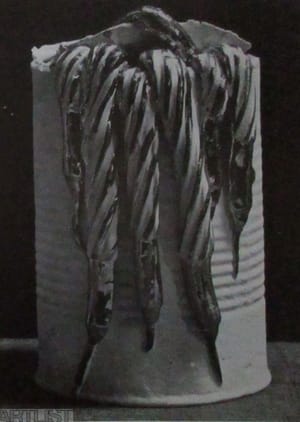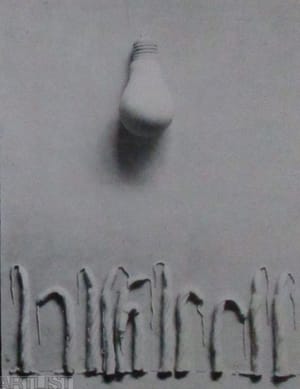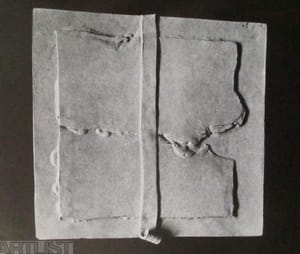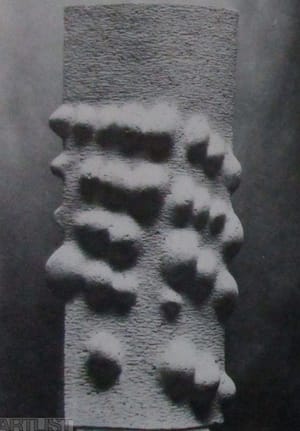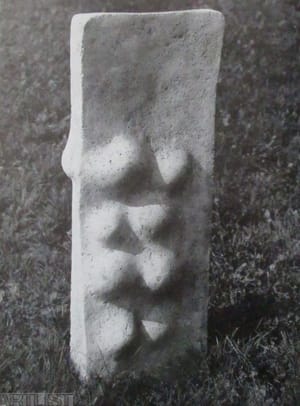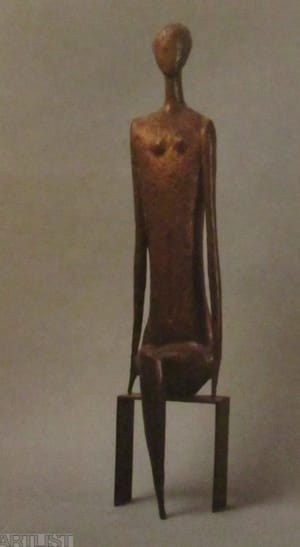- First Name
- Zdena
- Surname
- Fibichová
- Born
- 1933
- Birth place
- Praha
- Died
- 1991
- CSU Library
- ↳ Find in the catalogue
About artist
Zdena Fibichová belonged to a talented generation of sculptors that gathered in Czechoslovakia in the post-war years at the Academy of Arts, Architecture and Design in Prague, mainly in the studio of Josef Wagner. Fibichová was part of the second wave of students who began their studies at the start of the 1950s. Her classmates included Vladimír Preclík and Jan Hendrych. At that time, Czech art was seeking a link to pre-war modernism. A synthesis of these efforts was reflected in the work of the Trasa group, which Fibichová was a member of. However, unlike other sculptors, in her early works she did not look for prototypes in Czech cubism and the interwar avant-garde, but reached back further in time to ancient cultures and Mediterranean sculpture.
In her sculptures from the 1950s she is clearly searching for her own language, and like other artists she found this sometime around 1963. While Ráno / Morning (1958) reveals the influence of Josef Wagner, two years younger, the smoothly modelled Modelka ú Model (1960) and Sedící / Sitting (1961) now draw on a knowledge of post-war Italian sculpture, above all that of Marino Marini. Figuration was the starting point for all artists thanks to the relaxation of political pressure and the possibility of exhibiting during the 1960s. Most sculptors of this period underwent almost the same artistic development. In Fibichová’s this was the most productive and innovative period in her career. She tried out new possibilities in terms of both material and form. The goal was to reduce form to its elementary basics. The lyrical statuettes of women or couples gradually disappeared. To begin with the face was lost and only the shape of the head and chest remained, as in the case of the lyrically conceived Sedící/ Sitting. Later on still only the figure remains, without bodily features, as in several of the statuettes from the series of suspended Mikroplastik / Micro-Statues (1961–1962), in which the body is almost completed erased in such a way as to encourage maximum abstraction and stylisation.
Micro-Statues is pivotal in Fibichová’s oeuvre in that it allowed her to break free from the figural theme, which she had been treating with more and more of a free hand. Since the statuettes in this series were modelled in plasticine, which allowed for an intuitive approach to shape, Fibichová arrived at a conception of sculpture as the direct expression of an idea, her own feelings and psychological states, and her work became more and more personal. Though we find similarities with the work of Eva Kmentová or Věra Janoušková, Fibichová’s sculptures are emotionally enclosed within themselves. It is this emotional introversion that made Fibichová a solitary figure on the art scene, even though during the 1960s she participated in several important sculpture exhibitions.
From 1963–1965 Fibichová most often turned to natural motifs (Lomikámen, Černobýl) and at the same time moved from ephemeral plaster in favour of easily modelled tin. The surface of the sculptures from this period is, in accordance with the informel aesthetic, disrupted by scratches and notches, as we see in Křídlo / Wing (1965). A turning point was Fibichová’s residency in France in 1965, where she began working with ceramic clay. This gave rise to the cycles Deníky / Diaries and Stély / Stele, which gave rise to the massive concrete and cement steles [a stele is a stone or wooden slab erected in the ancient world as a monument] of the latter half of the 1960s. Stély (1966–1968) are not smooth geometric shapes in the style of Zdeněk Palcr, but have their own life, with shots or buds piercing the hard material as though from within in an endeavour to burst open the work into space.
Fibichová enjoyed her greatest successes in the latter half of the 1960s. She had a number of solo exhibitions and worked on commissions for public spaces (in Horní Liboc and Zahradní město). In 1968 she was hit hard by the occupation and retired more and more into herself. She almost stopped creating. The following year she fell seriously ill and had to adapt her work, to which she slowly returned, to these new conditions. This meant moving away from the monumental steles to more intimate sculptures made mainly of plaster and clay. In the cycle Dopisy / Letters she attempted to work with relief, and returned to this in the series Vzkazy / Messages (1969), Z rodinného alba/ From a Family Album (1971) and in a series on the subject of housework (1970). She continued working in all of these cycles with clay in an unorthodox matter, perforating it, cutting it like paper and stitching it as though it were a fabric.
Just as the period of normalisation began in Czechoslovakia, Fibichová moved out of Prague and her seclusion intensified. During the 1970s she began to used everyday items in her works (light bulbs, string, cans, etc.) that she transformed without change into sculptural objects (Pytlíky / Bags) 1978–1979). Věra Janoušková had already done something similar in Peřina/ Duvet (1966). However, while the origin of Janoušková’s work can only be derived from its name, Fibichová’s bags remained what they were to begin with. During the 1980s she continued to develop the principles contained in her early works, and introduced into her ceramics an element of pressing, i.e. forcing the clay through a meat grinder, and wiring, which she used to wrap around the elementary stereo-metric shapes as in Poslední kostka / The Last Cube (1985).
- Author of the annotation
- Zuzana Krišková
- Published
- 2018
CV
Studies:
1952-1957 Academy of applied arts, architecture and design, Prague, studio of sculpture of Josef Wagner
Vyšší škola bytového průmyslu (Václav Markup)
Stipends:
1965 Vence, France
- Member of art groups included in ARTLIST.
Exhibitions
- Solo exhibitions
-
2013
Zdena Fibichová - Vzkazy, Museum Kampa, Praha
1986
Zdena Fibichová, plastika, kresby, keramika, Dům umění, Bludný kámen Opava, Opava
- Group exhibitions not included in ARTLIST.
-
2017
Příliš mnoho zubů, Museum Kampa, Praha
2016
Uhlem, štětcem, skalpelem…, Muzeum umění Olomouc, Olomouc
2015
Schránka pro ducha, Galerie moderního umění v Roudnici nad Labem, Roudnice nad Labem
2014
Stav mysli/Za obrazem, Galerie Středočeského kraje, Kutná Hora
2009
Socha a město Liberec 1969, Oblastní galerie v Liberci, Liberec
2008
České a slovenské umění 60. let 20. století, Dům umění, Ostrava
Na zkoušku v ráji? Umění šedesátých let ze sbírek Západočeské galerie v Plzni, Plzeň
2005
Folklorismus v českém výtvarném umění XX. století, Muzeum Jana Amose Komenského, Uherský Brod
2001
Jiří Kolář sběratel, Veletržní palác, Praha
Barevná socha, Severočeská galerie výtvarného umění v Litoměřicích, Litoměřice
2000
Umění zrychleného času. Česká výtvarná scéna 1958–1968, Galerie výtvarného umění v Chebu, Cheb
1997
Umění zastaveného času: Česká výtvarná scéna 1969–1985, Galerie výtvarného umění v Chebu, Cheb
Mezi tradicí a experimentem. Práce na papíře a s papírem v českém výtvarném umění 1939–1989, Muzeum umění Olomouc, Olomouc
1994
Ohniska znovuzrození, Městská knihovna Praha, Praha
1993
Socha hlína, Středočeská galerie, Praha
1992
Contemporary East European Ceramisc, The Clay Studio, Philadelphia
Šedá cihla 78/1991, Dům umění v Opavě, Opava
Tschechische Keramik, Deutsches Keramikmuseum, Düsseldorf
Europäische Dialoge 1991, Museum Bochum, Bochum
Keramika 91, Mánes, Praha
1990
Prag – Linz, Hipp Halle, Gmunden – Theresienthal
Výtvarné tendence, Středočeská galerie, Praha
Neue Blätter aus der ČSSR, Kupferstichkabinett, Drážďany
1989
České sochařství 1948 – 1988, Krajské vlastivědné muzeum, Olomouc
1985
Barevná socha, Galerie H, Kostelec nad Černými lesy
1976
Podoba člověka v keramice, Moravská galerie v Brně, Brno
1971
Mostra della Grafica Cecoslovacca Contemporanea, Musei Civici del Castello Visconteo, Pavia
1969
Trasa 1969, Mánes, Praha
Socha a město, Oblastní galerie v Liberci, Liberec
1968
České sochařství 19. a 20. století, Letohrádek královny Anny, Praha
1968
Socha piešťanských parkov ’68, Kúpelový ostrov, Piešťany
1967
Socha a kresba, Mánes, Praha
1966
Jarní výstava 1966, Mánes, Praha
1965
Sochařské bilance 1955 – 1965, Olomouc
1964
Socha 1964, Liberec
Trasa, Galerie Václava Špály, Praha
1963
Rychnov 1963, Zámek Rychnov nad Kněžnou, Rychnov nad Kněžnou
1961
Tvůrčí skupina Trasa, Galerie Československý spisovatel, Praha
1959
Trasa 54, Galerie Fronta, Praha
1958
Umění mladých výtvarníků Československa 1958. Obrazy a plastiky, Jízdárna Pražského hradu, Praha
- Collections
- Alšova jihočeská galerie v Hluboké nad Vltavou Galerie Benedikta Rejta Galerie výtvarného umění v Roudnici nad Labem Galerie výtvarného umění v Olomouci Mezinárodní muzeum keramiky Moravská galerie v Brně Národní galerie v Praze Oblastní galerie v Liberci Orlická galerie v Rychnově nad Kněžnou Severočeská galerie výtvarného umění v Litoměřicích Středočeská galerie Uměleckoprůmyslové muzeum v Praze
Monography
- Monography
PACHMANOVÁ M.: Zdena Fibichová (1933–1991), katalog výstavy, Museum Kampa, Praha 2013 PETROVÁ E.: Zdena Fibichová: Plastiky a kresby, katalog výstavy, Galerie Fronta, Praha 1990 ŠEVČÍKOVÁ J./ŠEVČÍK J.: Zdena Fibichová: Obydlí, katalog výstav, Výstavní síň semafor, Praha 1987 PETROVÁ E.: Zdena Fibichová: Sochařské práce z let 1966–1970, katalog výstavy, Pražákův palác, Brno 1970 PETROVÁ E.: Zdena Fibichová: Kresby, sochy, katalog výstavy, Městské muzeum a galerie, Hořice 1968 ŠETLÍK J.: Sochařské bilance 1955–1965, katalog výstavy, Dům umění, Olomouc 1965 VACHTOVÁ L.: Socha 1964, katalog výstavy, Oblastní galerie, Liberec 1964
- Articles
Mezi snem a realitou - sochy z hlíny Zdeny Fibichové, Milan Hlaveš - Sklo, doba, lidé - vydání 23/2002
